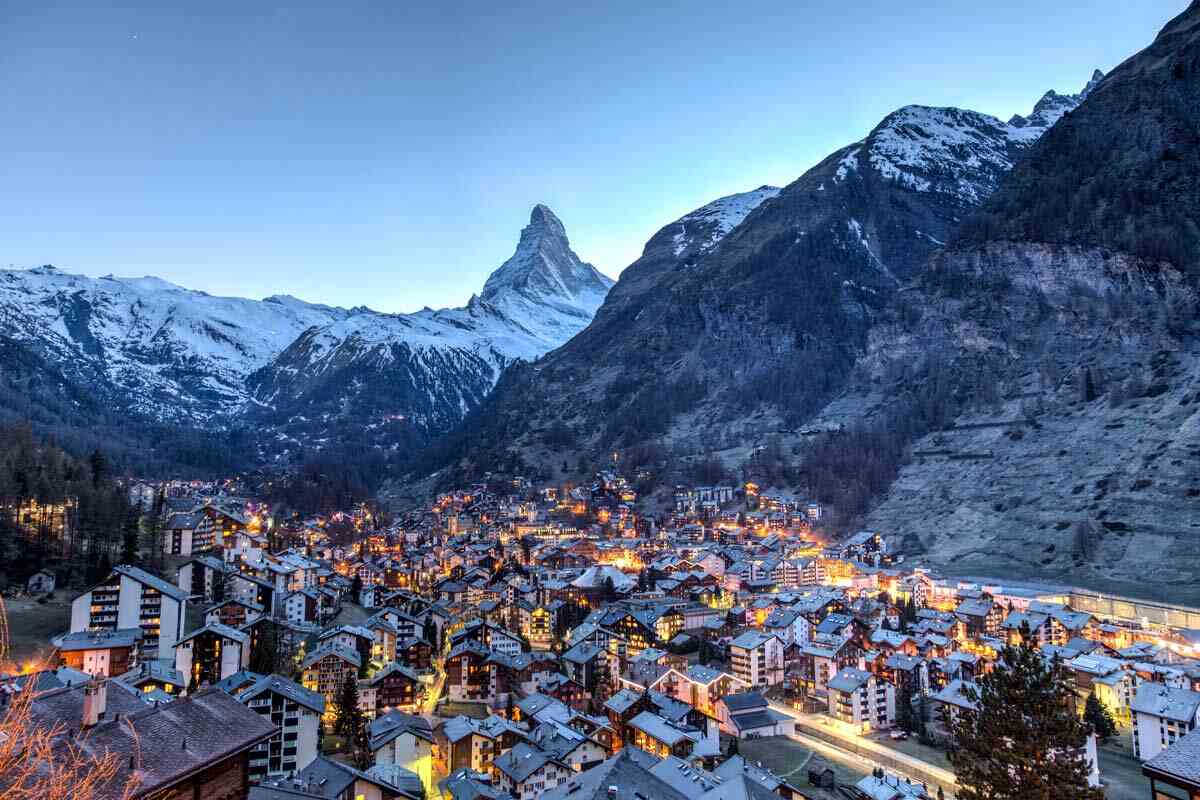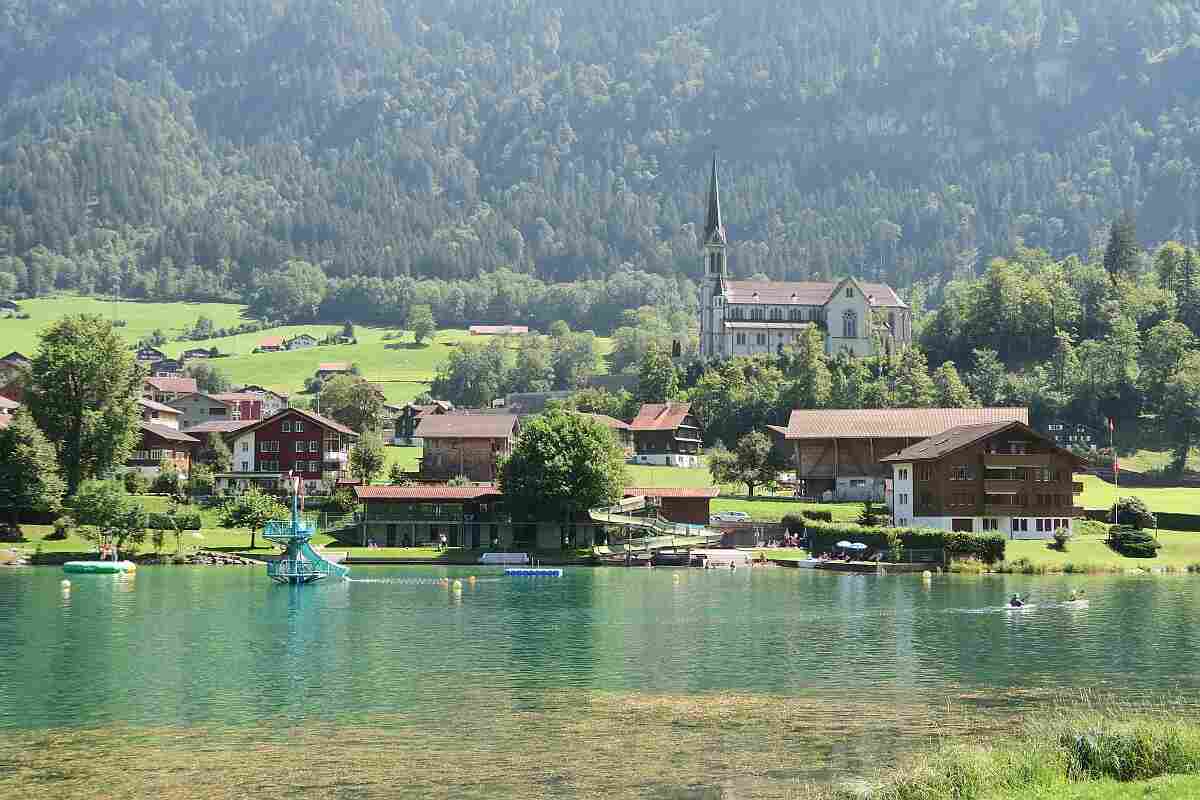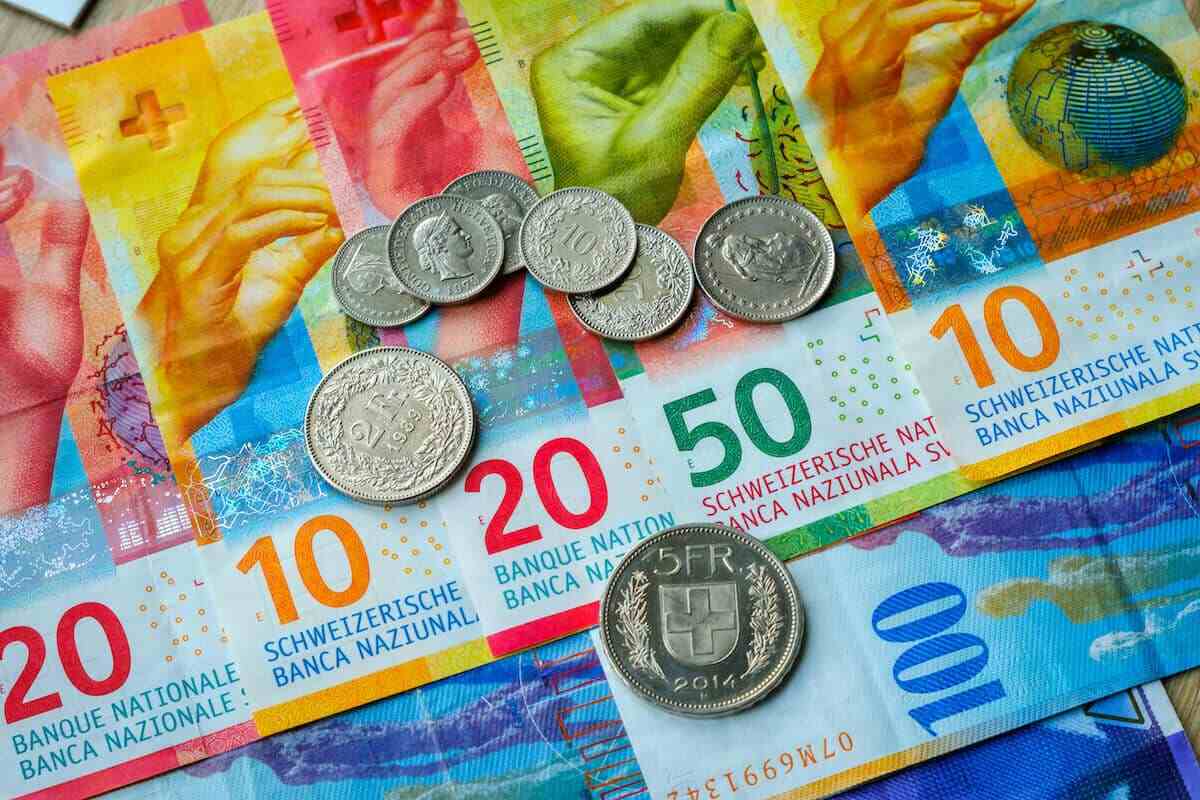What Is the Best Time to Visit Switzerland? Swiss Traveling Guide
Switzerland is a dream destination for many travelers – snow-covered mountains, glittering lakes, charming villages, and some of the best chocolate and cheese on Earth. But figuring out the best time to visit Switzerland? That’s where things get tricky.
Honestly, the best time depends on what you’re after. Whether you’re chasing wildflower-filled meadows, crisp winter slopes, or lakeside summer relaxation, each season offers something unique to experience.
Let’s break it down season by season so you can figure out what is the best time for you to go to Switzerland.
Why Visit Switzerland? The Alpine Paradise
Switzerland isn’t just about mountains and chocolate (though both are fantastic). This small but mighty country packs in a rich cultural tapestry, breathtaking landscapes, and world-famous attractions. With a population of about 8.8 million people, Switzerland welcomes over 11 million international tourists annually – and it’s easy to see why.
From towering Alpine peaks to serene lakes, medieval towns, and vibrant cities, Switzerland has a bit of everything. It’s famous for its natural beauty: think the Matterhorn, Jungfrau region, and iconic lakes like Lake Geneva, Lake Lucerne, and Lake Lugano. More than 1,500 lakes cover about 6% of its surface area, earning it the nickname of "the land of the lakes."
Winter sports enthusiasts flock here for skiing, snowboarding, and sledding in world-renowned resorts like Zermatt and St. Moritz. Beyond nature, Switzerland boasts cultural gems. It’s home to prestigious events like the Montreux Jazz Festival, Fête de l’Escalade in Geneva, and Basel Art Fair. Food lovers can indulge in fondue, raclette, and chocolate, all while greeting dairy cows on Alpine hikes.
Whether you’re after adrenaline-packed adventures or quiet, scenic lakeside strolls, Switzerland’s the place to be. So, the question isn't whether to visit, but rather what the best time to visit Switzerland is.

What Time Is It in Switzerland?
Switzerland runs on Central European Time (CET), which is UTC+1. During daylight saving time (from the last Sunday in March to the last Sunday in October), it shifts to Central European Summer Time (CEST), UTC+2.
This means if you’re in New York, Switzerland is typically 6 hours ahead. For travelers coming from London, it’s 1 hour ahead, and for those in Sydney, it’s 9 or 10 hours behind, depending on the time of year.
Fun fact? Time zones aside, Switzerland seems to run like clockwork – quite literally. Trains depart precisely on time, shops close at set hours, and even restaurant kitchens often stick to strict schedules. It’s part of the charm (and efficiency) that makes the country tick.
Best Time of Year to Visit Switzerland
Planning a trip to Switzerland can be as exhilarating as gliding down the Swiss Alps. With its majestic landscapes, charming villages, and vibrant cities, this picturesque country offers something for everyone. However, timing is everything in order to scratch your particular itch.
Whether you’re dreaming of skiing on powdery slopes, hiking through lush greenery, or simply soaking in the serene beauty, discovering the best time to go to Switzerland can make all the difference in your travel experience. Let’s explore the ideal seasons for an unforgettable Swiss adventure, depending on your preferences.
Ready to sell?
Are you ready to sell your currency? Stop waiting and request a Shipping Kit. We will provide everything you need to ship and receive funds for currencies you own.
Spring (March to May): A Fresh Start
Switzerland shakes off winter in the spring months. This is when winter’s chill begins to fade, and blooming flowers and greener landscapes take over. Temperatures rise gradually, starting from around 8°C (46°F) in March and hitting 18°C (64°F) by May, making the valleys come alive with color.
Why Visit in Spring?
- Fewer tourists — It’s a quieter time, which means less jostling for space on scenic trains like the Glacier Express.
- Lower prices — The cheapest time to visit Switzerland tends to hover around March and April, before the summer crowd rolls in (summer is also a popular party time in Swiss).
- Gorgeous scenery — The Alps are still snow-capped, but lower elevations burst into color. Regions like the Lauterbrunnen Valley showcase wildflower meadows and waterfalls, ideal for scenic hikes.
- Events — Many regions celebrate the arrival of spring with parades, floral displays, and traditional festivities that honor nature’s rebirth. For example, the May Queen Parade is a lively celebration welcoming the season with fun cultural traditions.

Summer (June to August): Sunshine, Lakes, and Mountains
The summer months are a sight to behold. Switzerland is in full bloom, with lush valleys, lively cities, and warm temperatures averaging 18°C to 28°C (64°F to 82°F).
What’s Special About Switzerland Summer?
- Hiking paradise — The Alps transform into a playground for hikers. Zermatt, Jungfrau, and Interlaken offer the best trails for also summer trekking. With over 65,000 km of trails, you can hike alpine meadows or cycle scenic routes.
- Lakeside vibes — Chill by the major lakes such as Lake Geneva, Lake Lucerne, or Lake Lugano. Go swimming, kayaking, paddling, or enjoy a sunset cruise during the equally captivating Switzerland summer.
- Festivals galore — If you're into festivals, you can catch the biggest music festival in Nyon (Paléo Festival) or vibrant street festivals in Zurich. Enjoy al fresco dining, wine tastings in the UNESCO-listed Lavaux vineyards, and seasonal farmers’ markets throughout the country.
Downsides? It’s an expensive time to visit, especially in popular areas like Zermatt or Lucerne. Hotels book up fast. So, if you want that perfect mountain chalet, plan early.

Autumn (September to November): Golden Hues and Quiet Retreats
Autumn is Switzerland’s underrated star. It’s cooler, quieter, and cheaper — the sweet spot between summer crowds and busy winter resorts. As the foliage turns gold and red, the land of the lakes transforms into a quiet, reflective landscape perfect for cultural immersion and harvest celebrations.
Why Opt for an Autumn Trip:
- Perfect hiking weather — Cooler temps make it a great time for hiking as you can enjoy quieter trails as the crowds thin out. In late September, you can even watch as farmers guide their cattle back from alpine pastures in a vibrant traditional ceremony known as Désalpe.
- A paradise for foodies — Think wine, cheese, and chestnuts. Autumn is harvest time in regions like Lavaux, where you can enjoy wine tastings and vineyard tours amid stunning fall colors. The grape harvest festival takes place each September in the charming village of Praz, a must for wine lovers and connoisseurs, while the Basel Autumn Fair brings Swiss culture to life. Mid-October brings the aroma of roasted chestnuts and festive culinary traditions in Ascona and onion-based specialties at Zibelemärit (Onion Market) in Bern.
- Stunning scenery — Imagine golden forests against towering peaks. It’s like a Bob Ross painting.
November gets a bit chilly and gray, but it’s also the cheapest time to visit before the ski season kicks off, so fall is the best time of year to visit Switzerland for those looking for a getaway on a budget.

Winter (December to February): Snow, Sports, and Cozy Villages
Winter sports enthusiasts, rejoice – winter is your time to shine. This is the peak tourist season, as Switzerland’s winter seasons are a magnet for skiers, snowboarders, and those who just want to sip hot chocolate in a mountainside cabin.
Why Travel in Winter?
- World-class skiing — Famed for its snowy wonderland, Switzerland is the go-to place for winter sports. World-class resorts like Zermatt, Verbier, St. Moritz, and Davos offer impeccable pistes, off-piste challenges, and luxury après-ski experiences.
- A flurry of winter weather — Expect snow-covered villages, frozen lakes, and picture-perfect landscapes. It's the ideal time to board panoramic trains (such as the Glacier Express or GoldenPass Express) to admire snow-capped peaks, verdant valleys, and glistening lakes.
- Christmas markets — If you love the holiday spirit, winter is the best time to go to Switzerland. Cities such as Basel (voted best in Europe for its Christmas market), Geneva, Zurich, and Montreux transform into winter wonderlands, glowing with festive lights, traditional crafts, and mulled wine from late November through December.
Downsides?
- Expensive time — Ski resorts charge top dollar during peak weeks.
- Chilly time — Temperatures can drop to -5°C (23°F) or lower.
Non-skiers aren’t left out. There are scenic trains, cozy towns, and trails for winter walking — perfect for winter walkers who prefer their mountains snow-dusted, not ski-covered.
.jpg)
Money in Switzerland: What to Know Before You Go
Contrary to what you might think, Switzerland’s official currency is the Swiss Franc (CHF) — not the Euro. Though many tourist spots in larger cities may accept Euros, you’ll almost always get your change back in Swiss Francs. Plus, the exchange rates aren’t usually in your favor.
Payment methods:
- Credit cards are widely accepted, especially in cities and major tourist areas.
- Cash is still king in rural areas, small shops, or local markets.
- Contactless payments (via Apple Pay, Google Pay, etc.) are becoming more common, but it’s wise to always have physical cash on hand.
Order Your Swiss Currency in a Click
Want to avoid high exchange fees or searching for an ATM when you land? Prepare in advance by buying Swiss currency here at US First Exchange — fast, secure, and delivered straight to your doorstep. We make it easy to bring foreign currencies home before your trip even starts. And if you find yourself with leftover Swiss Francs after your adventure, we can also help you sell the extra cash back. Maybe for your next travel fund?
Bonus: Your Burning Timing Questions Answered
We've gathered some bonus FAQs regarding the best time to visit Switzerland to ensure you get all the information you came for and help you make the final verdict on when to book your ticket.
What Is the Cheapest Month to Visit Switzerland?
March, November, and early December are the best bets in terms of budget-friendliness. These shoulder-season months usually see lower airfare and accommodation prices. The autumn season is generally when you're most likely to get attractive deals in the Alpine paradise.
How Many Days Do You Need in Switzerland?
It depends on what you are planning to see and do but to experience Switzerland's diverse landscapes and cultural highlights, a stay of 5 to 10 days is recommended. This duration allows you to explore various regions, from cities like Zurich and Lucerne to the scenic Swiss Alps.
While Switzerland is geographically compact, travel between destinations can be time-consuming due to its mountainous terrain. For a quick trip, 5-7 days cover major cities (Zurich, Lucerne, Geneva) and a scenic train ride. If you want to hike, ski, or explore more regions, 10-14 days is ideal.
What Is the Best Month to Travel to Switzerland?
The optimal time to visit Switzerland depends on your interests. June and September are sweet spots – great weather, fewer tourists, and plenty to do, making them ideal for outdoor activities and sightseeing. If you're interested in winter sports or festive Christmas markets, December, January, and February provide a magical winter experience.
During Which Month Is Switzerland Most Beautiful?
It depends on your taste. When it comes to scenic beauty, the Swiss's Mother Nature keeps on giving year-round. September’s golden hues, January’s snow-capped wonderland, and June’s alpine blooms are top contenders. Switzerland’s stunning landscapes are breathtaking all year round, while its diverse attractions ensure there’s always something unforgettable to experience.
So, When Should You Book That Ticket to the Land of Clocks & Chocolate?
Ultimately, the best time to visit Switzerland comes down to what you are looking to get out of your trip. Each season has its charm, from the lively Switzerland summer to the snow-covered busy winter. If you’re into skiing and après-ski fun, winter’s your season. For hiking and lakeside hangs, aim for summer or early autumn. And if you’re chasing deals, those spring months and late autumn days offer the largest cost savings.
One thing's for certain – whatever time you choose to go, Switzerland delivers. Whether you’re sipping wine at a grape harvest festival or admiring Lake Lucerne from a mountain peak, it’s a trip you won’t forget, and it’s probably time to book your next adventure. After you do, buy your Swiss Francs at US First Exchange with our secure online platform at incredibly competitive rates and with insured shipping options to travel with peace of mind.
P.S. Always pack your warmest layers for the Alps, no matter when you decide to travel. Swiss weather has sudden mood swings, so be prepared for anything.
Ready to buy?
Are you ready to buy your currency? Stop waiting and request a Shipping Kit. We will provide everything you need to ship and receive funds for currencies you own.



